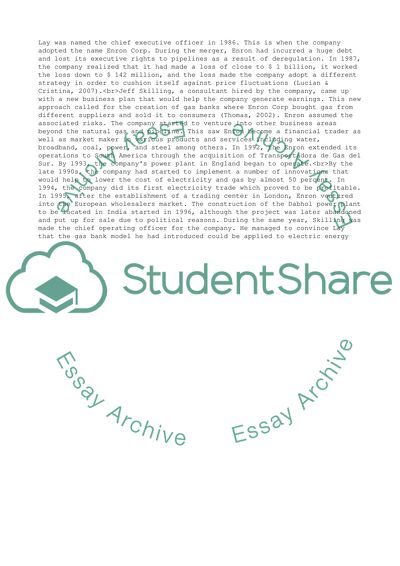Cite this document
(“Ethics in Accounting - Enron (History and Background of Enron) Essay”, n.d.)
Ethics in Accounting - Enron (History and Background of Enron) Essay. Retrieved from https://studentshare.org/management/1631815-ethics-in-accounting-enron-history-and-background-of-enron
Ethics in Accounting - Enron (History and Background of Enron) Essay. Retrieved from https://studentshare.org/management/1631815-ethics-in-accounting-enron-history-and-background-of-enron
(Ethics in Accounting - Enron (History and Background of Enron) Essay)
Ethics in Accounting - Enron (History and Background of Enron) Essay. https://studentshare.org/management/1631815-ethics-in-accounting-enron-history-and-background-of-enron.
Ethics in Accounting - Enron (History and Background of Enron) Essay. https://studentshare.org/management/1631815-ethics-in-accounting-enron-history-and-background-of-enron.
“Ethics in Accounting - Enron (History and Background of Enron) Essay”, n.d. https://studentshare.org/management/1631815-ethics-in-accounting-enron-history-and-background-of-enron.


